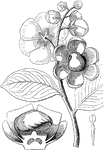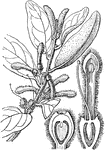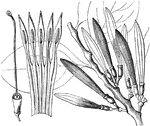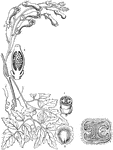
Glory Vine
"Eccremocarpus scaber. 1. cross section of its ovary; 2. longitudinal section of it; 3. seed." -Lindley,…

Aphelandra
Aphelandra cristata is a flowering plant shown potted here because it is often used as a houseplant.

Bellflower
"Wahlenbergia procumbens. 1. an entire flower; 2. stamens; 3. a stigma; 4. transverse section of the…
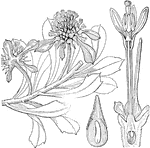
Acicarpha
"Acicarpha spathulata. 1. section of an entire flower; 2. perpendicular section of ripe fruit." -Lindley,…

White Matter of Spinal Cord
Transverse section through the white matter of the cord, as seen through the microscope.
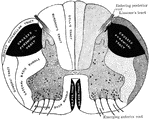
Transverse Section Through Spinal Cord
Diagrammatic representation of a transverse section through the spinal cord. The nerve tracts in the…

Alangium
Marlea begonifolia or Alangium chinense is an evergreen tree native in China used for its medicinal…

Mangrove
"1. Kandelia Rheedii; 2. its flower spread open; 3. a perpendicular section of its ovary; 4. the germinating…
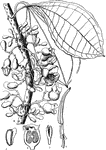
Medinilla
"1. Medinilla macrocarpa; 2. stamens of M. radicans; 3. perpendicular section of its ovary; 4. a section…

Myrtle
"Eugenia tuberculata. 1. a flower; 2. the same divided vertically; 3. a stamen; 4. a ripe fruit; 5.…
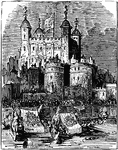
Procession to the Tower of London
Her Majesty's Royal Palace and Fortress, more commonly known as the Tower of London (and historically…
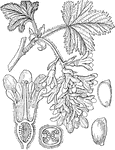
Redcurrant
"Ribes rubrum. 1. perpendicular section of a flower; 2. cross section of the ovary; 3. seed; 4. a perpendicular…
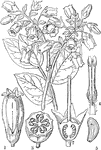
Large-Cluster Blueberry
"Vaccinium amoenum. 1. a flower; 2. a perpendicular section of it without the corolla; 3. a cross section…
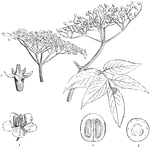
Elder
"Sambucus nigra; 1. a flower; 2. a young pistil; 3. a cross section of its ovary; 4. a perpendicular…
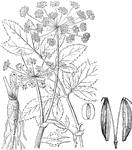
Garden Angelica
The flowers of Archangelica officinalis, or the Garden Angelica, a flowering plant in the Apiaceae family.
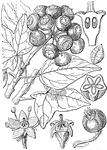
Ivy
"1. Hedera Helix; 2. a flower of Dimorphanthus edulis; 3. perpendicular section of the ovary; 4. undivided…
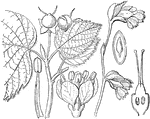
Winter Hazel
"Corylopsis. 1. flowers; 2. branch in fruit; 3. a flower separate; 4. a stamen; 5. a perpendicular section…

Mottled Dutchman's Pipe
"Aristolochia galeata. 1. fruit of an Aristolochia; 2. cross section of it; 3. half its seed." -Lindley,…

Bragantia
"Bragantia Blumei. 1. a section of its wood; 2. one of its flowers; 3. a seed; 4. the same divided perpendicularly;…

Sauvagesia
"Lavradia Vellozii. 1. an expanded flower; 2. the stamens with exterior petaloid scales; 3. a seed;…
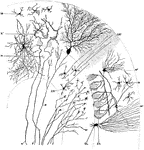
Sagittal Section Through Cerebellar Folium
Transverse section through a cerebellar folium. Labels: A, axon of cell Purkinje; F, moss fibers; K…
White Egret
The Great Egret Ardea alba, also known as the Great White Egret, or Common Egret, is a wading egret,…

White Pelican
The White Pelican, Pelecanus onocrotalus also known as the Eastern White Pelican or Great White Pelican…
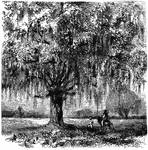
Oak
An illustration of a large oak tree. Oaks have spirally arranged leaves, with a lobed margin in many…

Brown Pelican and Sea Gull
An illustration of a brown pelican with a fish in it's mouth and a sea gull resting on his back. The…
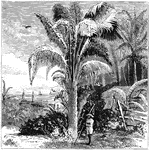
Date Palms
The Date Palm (Phoenix dactylifera) is a palm in the genus Phoenix, extensively cultivated for its edible…

Mont Blanc
The Mont Blanc (French for white mountain) or Monte Bianco (Italian 'White Mountain'), also known as…
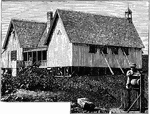
Bishop Patteson's House, Norfolk Island
John Coleridge Patteson (April 1, 1827 – September 20, 1871) was an Anglican bishop and martyr. On…

Stick Insect
The Phasmatodea (sometimes called Plasmodia) are an order of insects, whose members are variously known…
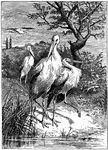
Egrets
An egret is any of several herons, most of which are white or buff, and several of which develop fine…

Inauguration of William McKinley
The inauguration of President William McKinley led by the Black Horse Cavalry down Pennsylvania Avenue.

Florida Elms
Seeds of Florida elms: the samara of (a), white ash (Fraxinus americana); (b), slippery elm (Ulmus rubra);…

Indian Sandalwood
Santalum album is a small tropical tree cultivated for its fragrant oil and medicinal uses.

Maryland Black Snakeroot
"Flowering plant of sanicle (Sanicula marilandica). (a), a male flower; (b), the fruit." -Whitney, 1911

Rall's Headquarters
Johann Gottlieb Rall (ca. 1726 - December 26, 1776 ) was a German colonel in command of Hessian troops…

Under Aspect of Male Bladder
The under aspect of the empty male bladder from a subject in which the viscera has been hardened in…
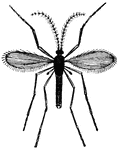
Hessian Fly
The hessian fly or barley midge, Mayetiola destructor, is a species of fly that is a significant pest…

Yellow-throated Vireo
The Yellow-throated Vireo, Vireo flavifrons, is a small American songbird. Adults are mainly olive on…

Deer Mouse
The genus Peromyscus contains species commonly referred to as deer mice. This is a genus of New World…

White-marked Tussock Caterpillar
Orgyia leucostigma, the White-marked tussock moth, is a moth in the family Lymantriidae. The caterpillar…
Brown-tail Moth Web
The Brown-tail (Euproctis chrysorrhoea) is a moth of the family Lymantriidae. It is distributed throughout…
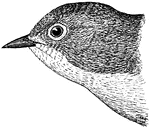
Nashville Warbler
The Nashville Warbler, Vermivora ruficapilla, is a small songbird in the New World warbler family. They…
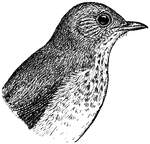
Wilson's Thrush
The Veery, Catharus fuscescens, is a small thrush species. It is occasionally called Willow Thrush or…
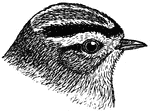
Golden-crowned Kinglet
The Golden-crowned Kinglet, Regulus satrapa, is a very small songbird. Adults are olive-gray on the…

White-breasted Nuthatch
The White-breasted Nuthatch (Sitta carolinensis) is a small songbird of the nuthatch family which breeds…
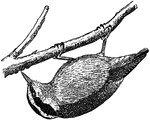
Red-breasted Nuthatch
The Red-breasted Nuthatch, Sitta canadensis, is a small songbird. Adults have blue-grey upperparts with…

Brown Creeper
The Brown Creeper (Certhia americana), also known as the American Tree Creeper, is a small songbird,…

Brown Thrasher
The Brown Thrasher (Toxostoma rufum) is a species of thrasher, part of a family of New World birds (Mimidae)…

Yellow-throat Vireo
The Yellow-throated Vireo, Vireo flavifrons, is a small American songbird. Adults are mainly olive on…

Ovenbird
The Ovenbird, Seiurus aurocapillus, is a small songbird of the New World warbler family. Ovenbirds are…
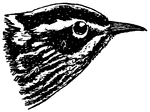
Black and White Warbler
The Black-and-white Warbler, Mniotilta varia, is a small New World warbler. It breeds in northern and…
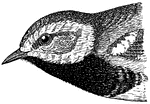
Black-throated Green Warbler
The Black-throated Green Warbler, Dendroica virens, is a small songbird of the New World warbler family.…
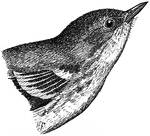
Pine Warbler
The Pine Warbler, Dendroica pinus, is a small songbird of the New World warbler family. These birds…
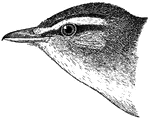
Red-eyed Vireo
The Red-eyed Vireo, Vireo olivaceus, is a small American songbird, 13-14 cm in length. It is somewhat…

